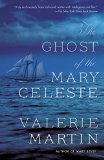Summary | Excerpt | Reviews | Beyond the book | Read-Alikes | Genres & Themes | Author Bio

A Novel
by Jane HarrisHarriet Baxter is a sprightly young creature, a woman of generous means alone in Glasgow during the 1888 International Exhibition, when the city bustled with newcomers and there was something spectacular to see every day. One day, while window-shopping on Buchanan Street, Harriet spots an older woman in a black bonnet lying on the sidewalk, a younger woman kneeling beside her. Thinking at first it is a bit of open-air theater, she moves closer, only to find that the older woman is no longer breathing, her lips blue. Harriet acts quickly and pops the woman's dentures out from her throat, instantly restoring her to good health. "Have we been introduced, madam?" the older woman asks faintly. Just like that, the novel is launched in a tone of innocent, light-hearted comedy.
In gratitude, the woman invites her to tea to meet her son, Ned Gillespie, who is also the younger woman's husband and a painter of rising fame in the group of painters known as the Glasgow Boys. The resourceful and infinitely cheerful Harriet quickly becomes indispensable to Ned, Annie, and their two troubled young daughters, acting as a champion for Ned's art and pitching in on the domestic front in their disordered household. Is there, perhaps, a little more to Harriet's interest in the Gillespies than a desire to be helpful? One would be forgiven for thinking so upon reading Harriet's description of first meeting Ned: "Such a lovely moment: the first time that I had ever heard my name upon his lips, and then, that shy, endearing smile that he gave me, after he had spoken." But Harriet is pure demurral. She wants to commission a portrait of herself from Ned merely to alleviate their straightened circumstances.
Harriet recounts these events forty-five years later, writing as an old woman in her London flat, a memoir very deliberately entered into the historical record of a minor painter ("It would appear that I am to be the first to write a book on Gillespie") and quite self-conscious in its address to its audience ("The astute reader will, of course, realize that I was employing irony"). Occasionally, she pauses her narration of the past in order to write about the present moment of composition, in which she is nearly housebound on the fourth floor of a Bloomsbury mansion block, accompanied only by two greenfinches and a housemaid named Sarah, who has lately been causing her some distress. Harriet wonders, "Is she, in fact, trustworthy? For instance - although, up until now, I have thought nothing of it - I have noticed a number of inconsistencies in the way that she speaks." Without knowing she is doing so, Harriet draws the reader's attention to her own stylistic quirks. Over and over, she uses expressions from the 1920s like "hot and bothered" and "barking up the wrong tree" in dialogue that she is supposedly faithfully quoting from 1888. Just as the reader questions Harriet's true feelings about Ned, so does she begin to wonder at Harriet's odd characterization of the beleaguered Sarah.
Even before the comedic idyll of the book is ruptured by the tragedy that befalls Ned's family, Harriet's tale of pluck and warm friendship has begun to falter in the reader's mind, if not her own. Harriet Baxter is that marvelous thing in literature - an unreliable narrator - and from behind her sepia-tinged story of a long-ago friendship peeks another, far darker one, of obsession, deception, and cruelty. Harriet's entwinement with the Gillespies is anything but innocent.
It is difficult to say more without spoiling the signal pleasure of Jane Harris's story, for the author has succeeded where the narrator fails: in telling a seamless story with near-perfect control whose very style becomes the source of its suspense. For instance, I haven't even mentioned Ned's daughter, Sibyl, a dark and almost gothically possessed young woman to whom Harriet forms an instant enmity. Harris so slowly and subtly allows doubt to creep into Harriet's tale that it is only upon going back and rereading early passages that its roots can be traced in Harriet's own words. Telling a doubled tale in which the storyteller remains unaware of what else she is communicating is technically difficult and brilliant when it works. It does here, and Harris adds to her accomplishment the fact that hers is the only female narrator of this sort that I can think of, in a genre dominated by the likes of Nabokov's Charles Kinbote in Pale Fire and Arthur Phillips's Ralph Trilipush in The Egyptologist.
The problem with a tale told by an unreliable narrator is that the animating voice and our guide into the novel's world is a source of distrust rather than pleasure, so it must be pointed out that those readers looking to identify with the protagonist, or to simply peer through her to attain an immersion in the fictional world will be disappointed. That caveat aside, Harris brings the Victorian world of Glasgow and the International Exhibition fully alive, as the city finds itself instantly cosmopolitan and beset with all the problems attendant upon an influx of foreigners, the provincial jostling with the modern. From art-world gossip in the Glaswegian newspapers to the stilted language of the criminal trial at the end of the book, this is a noisy, full, and fast-paced story, both delightful and disturbing... but mainly delightful.
![]() This review
first ran in the March 7, 2012
issue of BookBrowse Recommends.
This review
first ran in the March 7, 2012
issue of BookBrowse Recommends.

If you liked Gillespie and I, try these:

by Priya Parmar
Published 2015
The work of exciting young newcomer Priya Parmar, Vanessa and Her Sister exquisitely captures the champagne-heady days of prewar London and the extraordinary lives of sisters Vanessa Bell and Virginia Woolf.

by Valerie Martin
Published 2015
A captivating, atmospheric return to historical fiction that is every bit as convincing and engrossing as Martin's landmark Mary Reilly.
Your guide toexceptional books
BookBrowse seeks out and recommends the best in contemporary fiction and nonfiction—books that not only engage and entertain but also deepen our understanding of ourselves and the world around us.